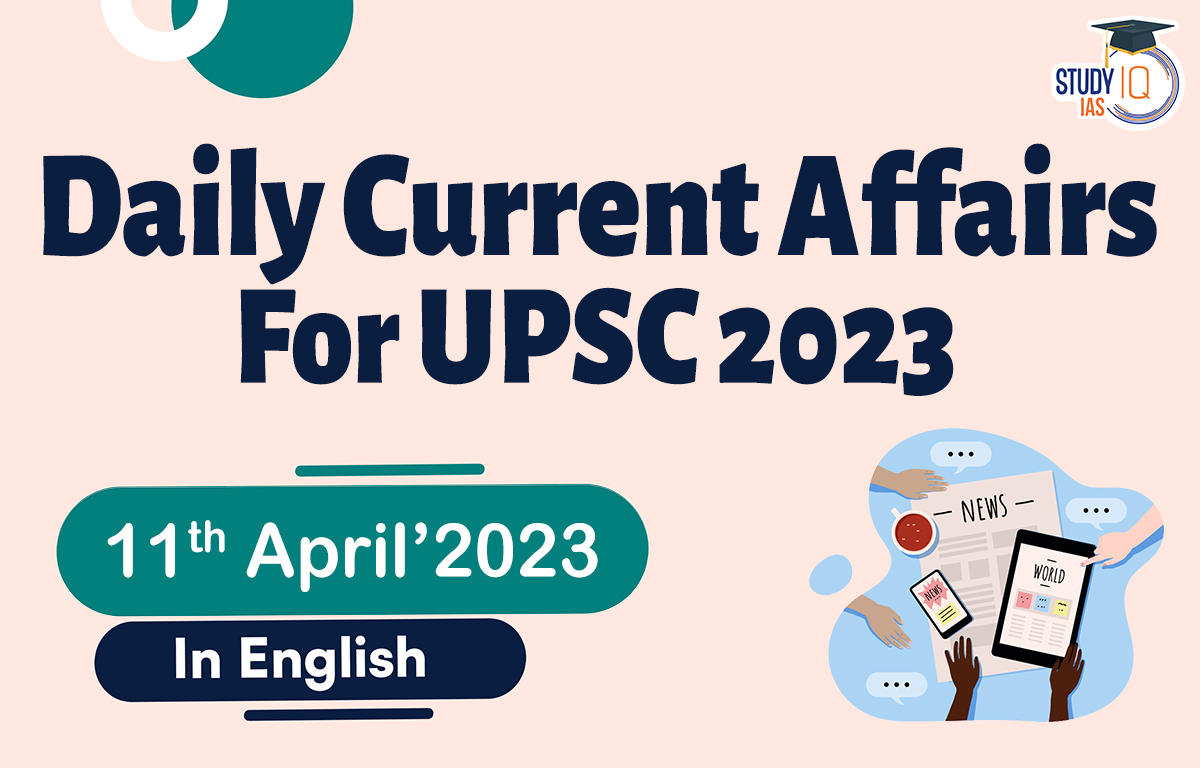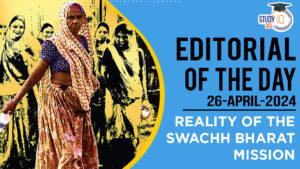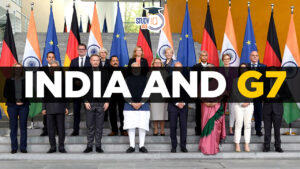Daily Current Affairs for UPSC 2023
Q) Which one of the following statements is not correct about UN Democracy Fund (UNDEF)?
- It will help promote human rights and the rule of law.
- It funds civil society organizations.
- It falls under the direct authority of the UN Secretary-General.
- Every member nation has to contribute equally to the UNDEF.
Daily Current Affairs for UPSC – 10 April 2023
Explanation:
- Option (1) and (2) are correct: India is the fourth highest donor to UN Democracy Fund, which funds at least 68 projects worldwide linked to George Soros’s Open Society Foundation. UN Democracy Fund (UNDEF) is a United Nations General Trust Fund, with the primary purpose of supporting democratization around the world. It was established by the previous UN Secretary-General Kofi Annan in July 2005. The UNDEF funds projects that focus on a range of areas, including:
- Strengthening civil society organizations
- Promoting human rights and the rule of law
- Enhancing the participation of women and marginalized groups in democratic processes
- Fostering the development of democratic institutions and processes
- Option (3) is correct: As a secretary-General’s Trust Fund located within the UN Secretariat, UNDEF falls under the direct authority of the UN Secretary-General. UNDEF provides funding to civil society organizations, including non-governmental organizations, community-based organizations, and academic institutions.
- Option (4) is incorrect: UNDEF subsists entirely on voluntary contributions from Government. The Secretary-General’s Advisory Board, UNDEF’s main governing mechanism, is composed of 19 members including the United States, India, Japan, Qatar, Australia, Germany and France.
Q) Consider the following statements about the ‘Preventive Detention’:
- A person held in preventive custody is not entitled to the right to personal liberty under Article 21 of the Indian constitution.
- Parliament has the sole authority to make a law on preventive detention related to the maintenance of public order.
- It is necessary to disclose the grounds of arrest to the person detained under preventive detention.
Which of the statements given above is/are correct?
- 1 only
- 1 and 2 only
- 2 and 3 only
- 1, 2 and 3
Explanation:
- Statement 1 is correct: Recently, Supreme Court observed that preventive detention laws in India are a colonial legacy and confer arbitrary power to the state. Preventive Detention is detaining a person in order to prevent a situation of crime that a person can possibly commit. It is an administrative action on the grounds of the suspicion that some wrong actions may be done by the person concerned which will be prejudicial to the state. A detainee under preventive detention has no right of personal liberty guaranteed by Article 19 or Article 21.
- Statement 2 is incorrect: The Constitution has divided the legislative power with regard to preventive detention between the Parliament and the state legislatures. The Parliament has exclusive authority to make a law of preventive detention for reasons connected with defence, foreign affairs and the security of India. Both the Parliament as well as the state legislatures can concurrently make a law of preventive detention for reasons connected with the security of a state, the maintenance of public order and the maintenance of supplies and services essential to the community.
- Statement 3 is incorrect: Detainee is entitled to know the grounds of his detention. The state, however, may refuse to divulge the grounds of detention if it is in the public interest to do so. This power conferred on the state leaves scope for arbitrary action on the part of the authorities. Detaining authorities must give the detainee earliest opportunities for making representation against the detention.
Q) With reference to State Energy Efficiency Index 2021-22, consider the following statements:
- Rajasthan and Telangana are in the Front Runner category, whereas Maharashtra and Punjab are in the Achiever category.
- The index focuses on mainstreaming energy data reporting to promote energy efficiency.
- The index is prepared and released by the NITI Aayog.
Which of the statements given above is/are correct?
- 1 only
- 1 and 2 only
- 1 and 3 only
- 2 and 3 only
Explanation:
- Statement 1 is correct: State Energy Efficiency Index (SEEI) 2021-22 assesses the annual progress of states and UTs in energy efficiency implementation, for FY 2020-21 and 2021-22. The index is designed to help track progress on state goals for energy savings and reduction in emission intensity. SEEI 2021-22 has an updated framework of 50 indicators aligned with national priorities. In SEEI 2021-22, 5 states – Andhra Pradesh, Karnataka, Kerala, Rajasthan and Telangana – are in the Front Runner category (>60 points) while 4 states – Assam, Haryana, Maharashtra, and Punjab – are in the Achiever category (50-60 points). Further, Karnataka, Andhra Pradesh, Assam and Chandigarh are the top-performing states in their respective state groups. Telangana and Andhra Pradesh showed the most improvement since the last index.
- Statement 2 is correct: The report outlines the following recommendations to help states drive change in energy efficiency which will contribute towards the fulfillment of SDGs and NDC:
- Enabling fiscal assistance for energy efficiency in the focus sectors.
- Developing institutional capacity in states and UTs to address emerging needs and challenges in energy efficiency implementation.
- Enhancing cross-functional collaborations across financial institutions, energy service companies, and energy professionals in large-scale energy efficiency implementation in states.
- Mainstreaming energy data reporting and monitoring across sectors.
- Statement 3 is incorrect: Union Minister of Power and New & Renewable Energy released the report of State Energy Efficiency Index (SEEI) 2021-22. The index was developed by the Bureau of Energy Efficiency (BEE), in association with Alliance for an Energy-Efficient Economy (AEEE).
Q) Consider the following statements about Project Elephant:
- It is a centrally sponsored scheme that was launched in 1992 to reduce human-elephant conflict.
- The Terai Elephant Reserve in Uttarakhand is the latest elephant reserve recognised by the government.
- As per the 2017 Elephant Census, Assam has the highest number of elephants in India.
Which of the statements given above is/are correct?
- 1 only
- 1 and 2 only
- 2 and 3 only
- 3 only
Explanation:
- Statement 1 is correct but Statement 2 is incorrect: Project Elephant was launched in 1992 as a centrally sponsored scheme with an aim to protect elephants and improve its habitat and corridors, reduce human-elephant conflict and ensure their welfare. The Ministry of Environment, Forest and Climate Change provides financial and technical support to major elephant range states in the country through the project. Unlike Project Tiger, the Project Elephant looks at the welfare and health of captive elephants as well. 33 elephant reserves have been notified (Terai ER in Utter Pradesh became 33rd India’s ER); 101 elephant corridors identified.
- Statement 3 is incorrect: More than 60% of the world’s elephant population is in India. The elephant is the Natural Heritage Animal of India. India has about 27,000 Asian Elephants, which is the world’s largest population of the species. As per Elephant Census (2017), Karnataka has the highest number of elephants (6,049), followed by Assam (5,719) and Kerala (3,054)
Q) With reference to Zojila Tunnel, consider the following statements:
- The tunnel connects Srinagar and Leh through Kargil.
- It is considered Asia’s longest bi-directional tunnel.
Which of the statements given above is/are correct?
- 1 only
- 2 only
- Both 1 and 2
- Neither 1 nor 2
Explanation:
- Both statements are correct: The Union Government is making efforts to open the Zojila tunnel for traffic ahead of its deadline set for 2026. Zojila Tunnel involves construction of a 14.15 Km long tunnel at an altitude of about 3000 m under Zojila pass (presently motorable only for 6 months in a year) on NH-1 connecting Srinagar and Leh through Dras & Kargil. Zojila tunnel will be India’s longest road tunnel, and Asia’s longest bi-directional tunnel. This tunnel will allow all-weather connectivity between Ladakh and Srinagar, which is disrupted during the winter months. The 13.14-km tunnel will facilitate round-the-year transportation of goods to Ladakh and better movement of the armed forces in case of emergency. This Project will make the travel on Srinagar-Kargil-Leh Section of NH-1 free from avalanches. Project would enhance the safety of the travelers crossing Zozila Pass and would reduce the travel time from more than 3 hours to 15 minutes. Project will generate employment to the locals. The construction of the Zojila Tunnel may bring about all-around economic and socio-cultural integration of these regions which remains cut off from the rest of the country during winters due to heavy snowfall for about six months.


 Current Affairs 26th April 2024 for UPSC...
Current Affairs 26th April 2024 for UPSC...
 Editorial of the day (26th Apr): Reality...
Editorial of the day (26th Apr): Reality...
 India And G7, India has Received Invitat...
India And G7, India has Received Invitat...

















